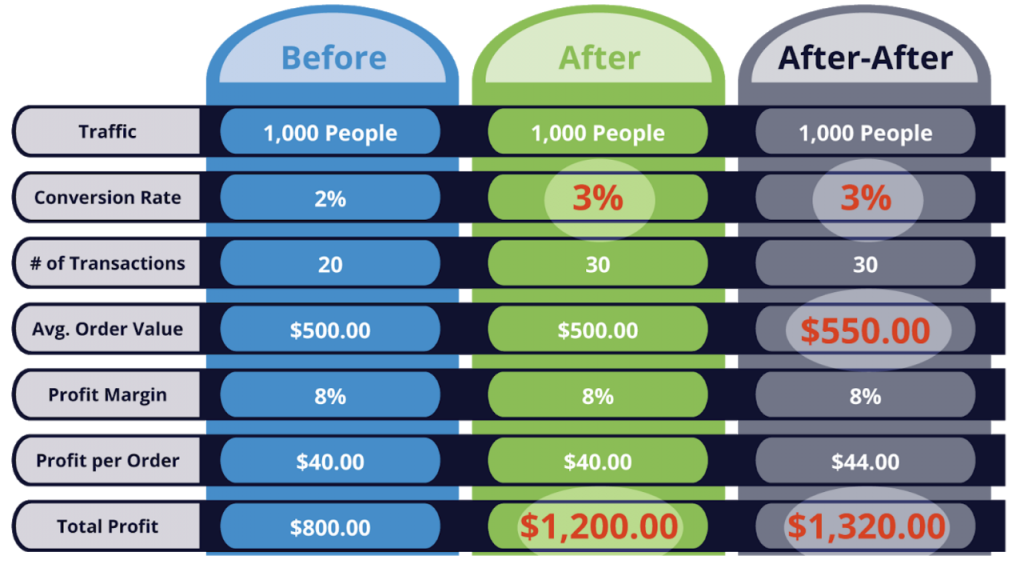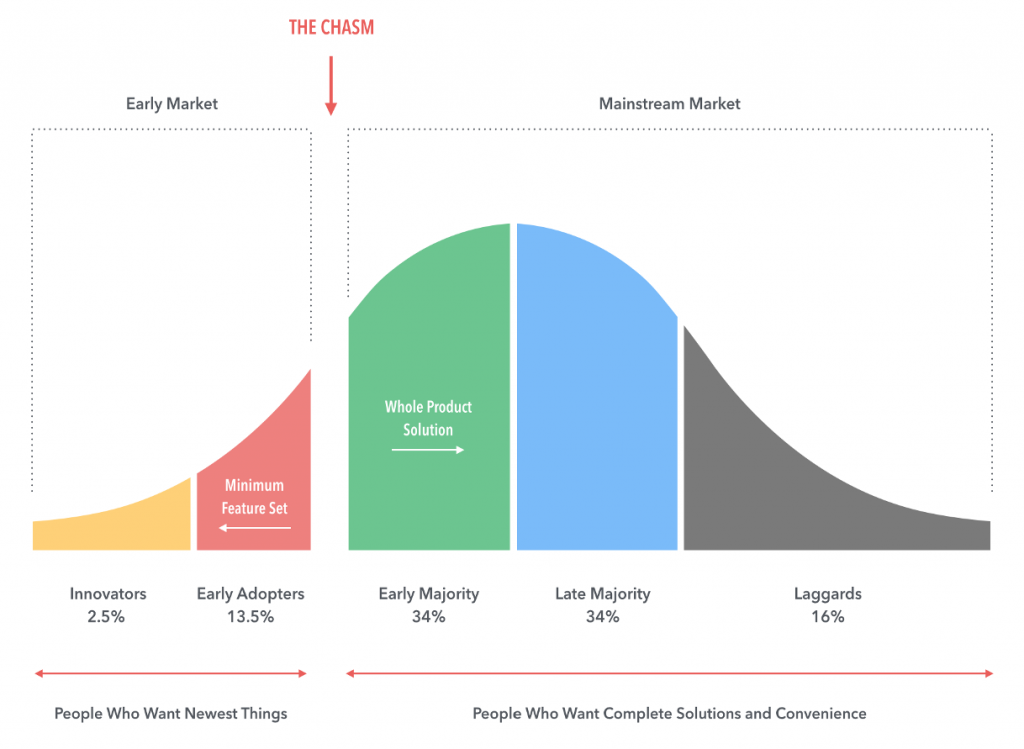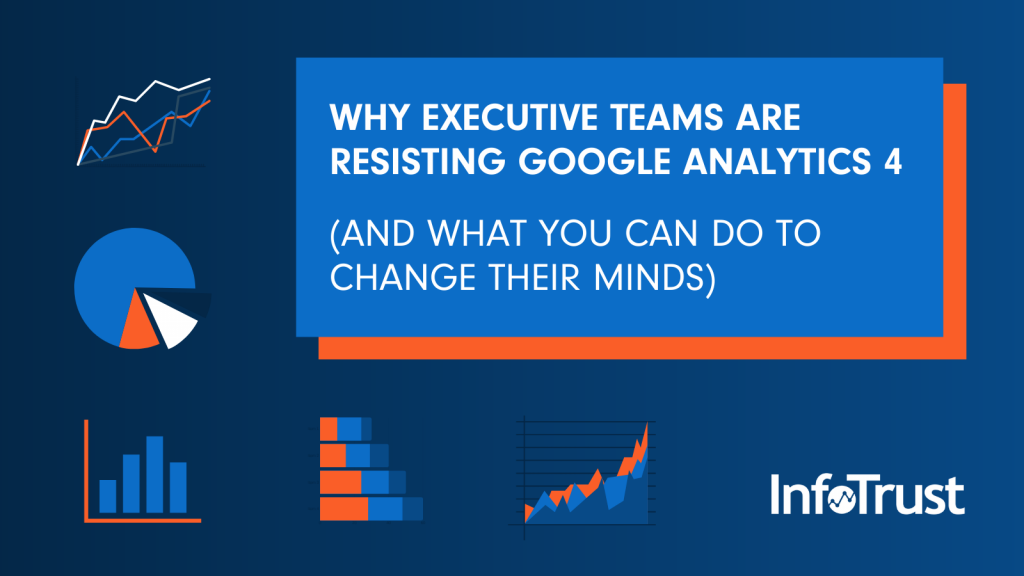Few can dispute that the future of analytics will be driven by machine learning and artificial intelligence. With Google’s launch of Google Analytics 4 (often referred to as GA4), many are excited about new features within the world’s most popular digital analytics service. And yet, it’s clear that many executives are resisting the time investment necessary to implement the latest analytics solutions (like GA4), wanting others to “try them first.” Why is that?
When explaining the value of Google Analytics 4 within an organization, the focus tends to be on product features instead of what executives care most about: improving bottom-line profits, cost savings, and mitigating risks. The biggest mistake most businesses make is falling in love with their product or service, not with their clients. And as we know, the needs of clients (our internal company stakeholders, in this case) vary depending on where they sit in the organization.
According to Selling Above and Below the Line: Convince the C-Suite. Win Over Management. Secure the Sale by Skip Miller, there is an important distinction between the needs of frontline managers and their executive counterparts. While frontline managers, “…hold the initial decision-making power that can lead to that first sale, even they report to a higher authority who evaluates the manager’s decisions from an entirely different perspective.”
In his book, Miller also distinguishes the needs of the top-level executives, whom he refers to as the “Above the Line” (ATL), versus the needs of the frontline managers, whom he refers to as “Below the Line” (BTL). All too often, the features and benefits of a product—which appeal to the BTL team—are overemphasized, while the ATL needs are not addressed explicitly. According to Miller, executives are “…more concerned with profit/loss indicators such as ROI, time saved, risk lowered, and productivity improved. It’s all about understanding their initiatives for the year, what’s holding them back from obtaining these, and helping them solve the problems so they can obtain the stated objectives.”
In this article, we’re going to identify some of the biggest objections executive teams have when Google Analytics 4 is presented to them. Armed with this knowledge, you can know ahead of time how best to address these concerns. (To be sure, these objections will rarely be about product features).
Understanding Unmet Needs and Potential Executive Objections
According to the Future of Analytics, a Forrester Consulting Thought Leadership Paper Commissioned By Google, there are several unmet analytics needs that businesses still deal with on the regular basis:
- Cross-platform analytics is still not the norm, despite its value. Less than half of firms (43%) have unified cross-platform analytics capabilities to measure customer interactions with their website and app in a single solution.
- Decision-makers value privacy features above other analytics platform capabilities. This suggests that decision-makers take a privacy-first view as they seek to protect consumer data and preserve trust.
- Firms use digital analytics to understand and optimize customer experiences. Improved customer experience is the top benefit firms have realized from their digital analytics technologies.
Google Analytics 4, in essence, tackles these important challenges through various product features. For example, built-in advanced machine learning models alert analysts of significant trends in data and predict possible customer churn using User IDs and Google Signals.
To avoid the trap of talking about these features, though, let’s discuss what questions (or objections) executives (ATL) may raise, regardless of the functionality.
Objection #1: Removing risk and increasing ROI
The global COVID-19 pandemic severely affected (and continues to affect) most companies. Work-at-home shifts, supply chain challenges, and overall employee morale: the feeling of being blindsided is still fresh in most companies’ minds. Many executives are looking forward to any level of “normalcy” they can get in 2021, and are not seeking to take on any more change than is necessary.
And yet, all of this seismic change has rendered historical playbooks largely irrelevant. Said another way, companies now (maybe more than ever) need a solid risk-mitigation strategy. This is especially true in terms of the risks associated with digital marketing, eCommerce, and direct-to-consumer (DTC or D2C) initiatives.
So, where does GA4 fit in? Let’s consider an example from the eCommerce space. In the eCommerce world, analytics typically can help companies answer the following questions:
- How do we stop churn rates and increase average order value?
- How do we decrease cart abandonment rate?
- How do I get more without having to spend more?
In the example below, we compare three different models showcasing how positive changes in conversion rate or average order value impact review or profitability.

Based on the models above, we can make an argument that the ROI of analytics (in this case) is the increase in total profit that results from our work to increase the conversion rate and the average order value.
GA4, with its event-based model, makes it easier not just to measure, but to determine what on-page activities can improve these metrics and drive ROI. By looking at digital behavior on the user level—and not on the session level, as in Universal Analytics—you give more consideration to how micro-actions, such as adding an item to a favorites list, can actually have a major impact on your bottom line.
Objection #2: Slowing down other priorities and productivity
For advertisers used to well-established tracking models in Universal Analytics, Google Analytics 4 will feel very… new.
But that’s the point. Google Analytics 4 is the future of analytics.
According to Google’s CEO, Sundar Pichai, “Computing is evolving again. We’re moving from mobile-first to AI-first. In an AI-first world, we are thinking through all our products. We are building AI-first data centers. We are focused on applying AI to solving problems.”
The new Google Analytics 4 event model creates a common data schema for websites and mobile apps, allowing for a compliant, machine learning and AI-first analysis and visibility into the user journey across devices. Predictive analytics and audiences via GA4 remove the barriers to trying machine learning-based models to drive media buying. Prior to GA4, this required additional software, data scientists, and significantly more time and effort dedicated to moving data in and out of reporting and analytics platforms.
Advanced analysis, if done manually, is difficult and very time consuming; few have time and needed resources to do it well. GA4 gives enterprises a more extensible, granular event measurement model, heavily customizable reporting, and increased integrations for data aggregations and remarketing. These features can help organizations spend more time on execution and less time on analysis.
Objection #3: We don’t want to be the first company to try…
Speaking of productivity and time saved, most organizations identify AI, machine learning, and data intelligence as some of their top priorities. And yet, any new technology with these capabilities requires pilot programs in order to build towards a 1-, 2-, or 3-year roadmap. By not starting the adoption process early, companies risk falling behind to those who do.
When executives choose to wait until a new platform is bug-free and “ready for prime time,” the first-mover competitive advantage is lost.
At this point, I’d be remiss not to bring up Geoffrey Moore’s book, Crossing the Chasm: Marketing and Selling Disruptive Products to Mainstream Customers. Below is the illustration of the chasm itself.

The point of crossing the chasm is the ability to move from selling to the “Early Market” and being able to sell to the “Mainstream Market,” starting with the “Early Majority.” Today we have a unique opportunity to appeal and sell Google Analytics 4 to the Early Adopters within our organizations, then bring it to the Early Majority.
Why? They want to be the first in line they are the ones who seek to try something new when it first becomes available. Being first is important to them, and listening to their language is important. Their language will indicate what they are looking to move towards. They will say things like, “We want to be better!” and “We want to challenge the status quo.” These are indicators that you’re speaking to an early adopter and the prime advocate for a GA4 implementation.
Wine Ages Well. Problems Don’t.
The bottom line? If Google Analytics 4 contributes to solving a problem, executives (ATL) will move forward with it. To advance the implementation of GA4, you must assess the size of the ATL problem(s) at hand and present Google Analytics 4 as part of a viable solution.
After a year like 2020, there will be natural resistance to more change. Google Analytics 4 will never be perfect—it will always evolve—but those who embrace this significant move from Google will reap the benefits of being an early adopter to new ways of looking at the market. This is an opportunity to see what others miss by looking differently at your analytics.
For additional information on this topic, please see The Value of GA4 for Enterprise Advertisers and our related introductory article on Google Analytics 4. We will also be posting more information on our website based on your comments and feedback to this article.


